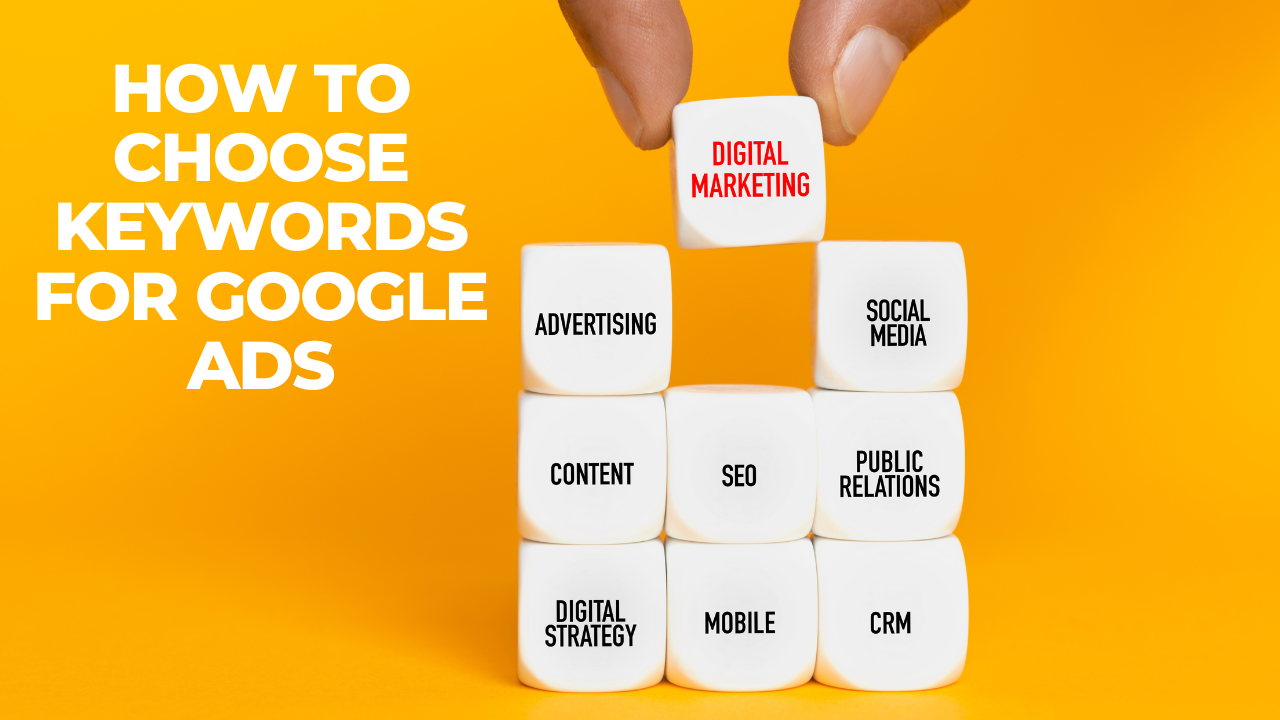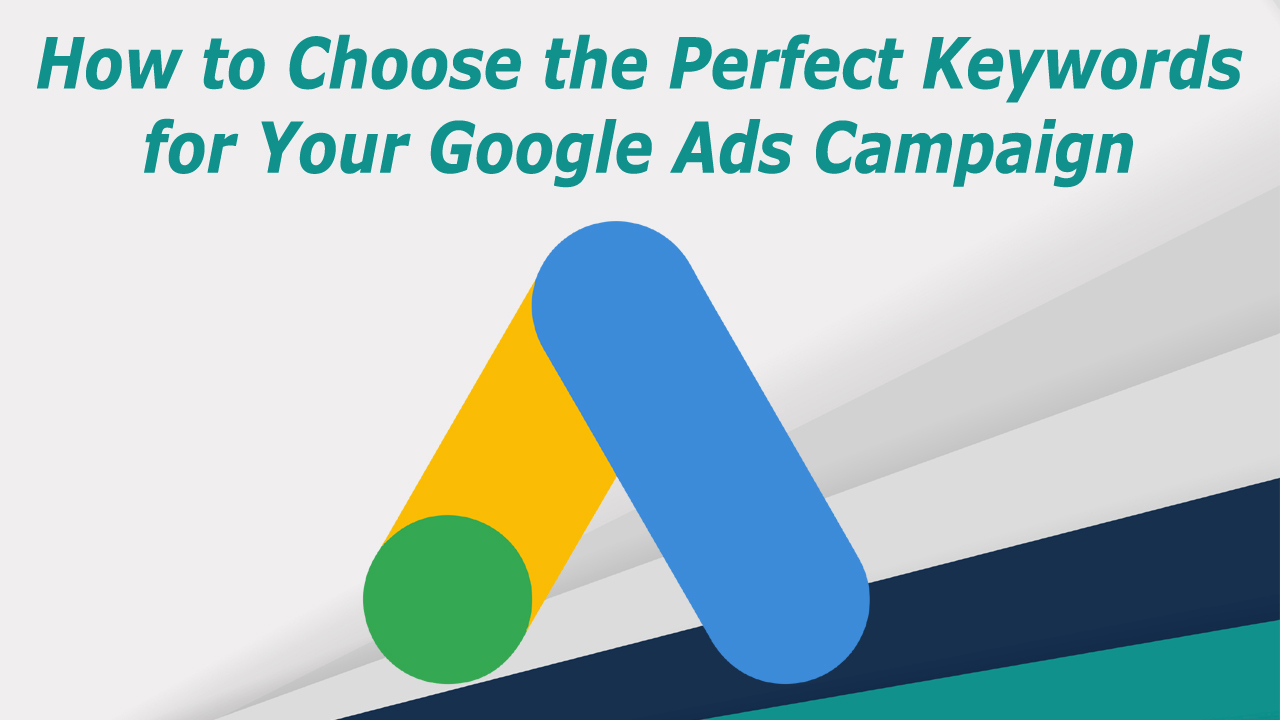Welcome to the world of online ads! Think of picking the right words for your Google Ads like choosing the best keys to open doors for people looking for what you offer. In this guide, we’ll make it easy to understand how to pick these keywords. It’s like having a good talk with your audience through your ads. By the end, you’ll know how to make Google Ads that not only grab attention but also help your business grow.
So what are keywords?
They’re the words people type when they’re searching on Google. Picking them is like speaking in a way that your customers understand. This guide will show you how to do that. We’ll help you figure out your goals and connect them with what your customers seek. With simple tips, you’ll learn to make Google Ads that show up and work for your business. Let’s start this journey to make your business shine online!
Table of Contents
Crafting a Strategic Blueprint Defining Your Campaign Objectives
Crafting a strategic blueprint for your Google Ads involves laying down a solid foundation and that begins with clearly defining your campaign objectives. Imagine this step as charting the course for your advertising adventure. In this phase you ll determine what you want to achieve with your ads – whether it’s boosting sales increasing brand awareness or promoting a specific product.
What s the main goal of my advertising campaign?
Knowing your destination helps shape the path you take. If you aim to sell more products your approach will differ from someone focused on spreading the word about their brand. By clearly defining your objectives you create a roadmap that not only guides your keyword selection but also ensures every element of your campaign works cohesively towards achieving your desired outcomes. Crafting a strategic blueprint is about aligning your advertising goals with the unique aspirations of your business setting the stage for a successful journey through the world of Google Ads.
Exploring Keyword Types Broad Match Phrase Match and Exact Match

In the world of Google Ads, not all keywords work the same way. It’s a bit like having different tools for different jobs. This part is about three main types of keywords broad match phrase match and exact match.
- Broad Match This is like the all-around option. It helps you reach a big audience by showing your ads for various versions of your chosen keywords. But it’s important to keep an eye on it and adjust it to make sure it fits your campaign well.
- Phrase Match Think of this as a bit more specific. It targets people looking for your exact keyword or a phrase that includes it. It’s a good balance capturing a focused audience without being too strict.
- Exact Match This is like using a very precise tool. It focuses on your exact keyword or very close variations. Your ads only show up when someone searches for that specific term. It’s not as wide-reaching but it’s powerful for reaching people with a specific interest.
Understanding these keyword types is like knowing when to use different tools. Each type helps you connect with your audience in a slightly different way. Choosing the right one depends on what you want to achieve with your ads and who you want to reach.
The Art of Keyword Research Tools and Techniques
Now let’s dive into the art of keyword research for your Google Ads. Think of it as the detective work behind finding the right words that your potential customers use when searching online. In this section, we’ll explore the tools and techniques that can make this process not only effective but also a bit fun.
- Google Keyword Planner This is like your keyword compass. It helps you find new keywords and gives insights into how often they are searched. It’s a fantastic starting point to discover what terms are popular in your industry.
- Google Trends Picture this as your trend tracker. It shows you how the popularity of a keyword changes over time. This helps you stay ahead of the curve and choose keywords that are on the rise.
- Competitor Research Think of this as peeking at what others are doing. Check out the keywords your competitors are using. Tools like SEMrush or Ahrefs can give you a spyglass into their strategy.
- Customer Feedback and Surveys This is like having a direct conversation. Ask your customers what words they would use to find your products or services. Their input can be a goldmine of valuable keywords.
- Long Tail Keywords Imagine these as specific detailed clues. Long tail keywords are longer and more specific phrases. They may have lower search volumes but they often indicate a more motivated and targeted audience.
Remember the art of keyword research is a blend of using these tools and adding your business insights. It’s about understanding your audience and thinking like your customers. By combining these tools and techniques you’ll uncover the keywords that can make your Google Ads truly effective.
Building a Robust Keyword List Quality Over Quantity
When building your keyword list for Google Ads it’s not about having the longest list but having the right words that pack a punch. Think of it like assembling a team of superheroes – you want each keyword to bring something special to the table. Here’s how you can build a robust keyword list with quality at the forefront.
- Relevance is Key Each keyword should be like a match made in heaven for your business. Make sure they directly relate to what you offer. It’s better to have fewer keywords that matter than a long list that’s not quite right.
- Consider Search Intent Think about what people are looking for when they type in a particular keyword. Are they looking to buy seeking information or just browsing? Tailor your keywords to match the intent ensuring your ads align with what users are searching for.
- Long Tail Keywords Shine These are like the unsung heroes. Long tail keywords are more specific phrases often indicating a user who knows exactly what they want. While they might have lower search volumes they can bring in highly targeted traffic.
- Negative Keywords Matter It’s not just about the “yes” keywords it’s also about the “no” keywords. Identify terms you don t want your ads to show for. This helps refine your audience ensuring your ads reach the right people.
- Quality Score Boost Google Rewards Relevance. A focused keyword list improves your Quality Score which can lead to lower costs and better ad placements. It’s a win-win.
Refining and Adapting Continuous Keyword Optimization
Once your Google Ads campaign is up and running the journey doesn t stop – it’s time for continuous keyword optimization. Think of it like fine-tuning a musical performance you want everything to harmonize perfectly. In this phase, we’ll explore how to refine and adapt your keywords over time to keep your campaign in top shape.
- Regular Check-ins Just like maintaining a garden your keyword garden needs attention. Regularly check how your keywords are performing. Look for the stars (high-performing keywords) and the underperformers.
- Performance Metrics Dive into the numbers. Metrics like click-through rate (CTR) conversion rate and cost per click (CPC) provide valuable insights. Identify what’s working well and where adjustments are needed.
- Seasonal Adjustments Think of this as changing your wardrobe with the seasons. Some keywords might perform differently during certain times of the year. Adjust your keywords to stay relevant and capitalize on seasonal trends.
- Adapting to Trends The online world is dynamic with trends coming and going. Stay informed about industry changes and adapt your keywords accordingly. Being flexible keeps your ads in tune with what’s current.
- Negative Keywords Refinement Your list of negative keywords can always use a polish. Identify new terms that do t align with your goals and add them to ensure your ads are t showing up where they should not.
- A/B Testing This is like trying out different instruments in a band. Experiment with variations of your keywords and ad copy to see what resonates best with your audience. A/B testing helps you refine your approach based on real performance data.
Avoiding Pitfalls Common Mistakes in Keyword Selection

When it comes to making effective Google Ads it’s important to avoid some common mistakes in choosing keywords. One mistake is using broad match too broadly which can show your ads in the wrong places. Another misstep is forgetting about negative keywords – words you do t want your ads to be associated with. Also, it’s crucial to keep an eye on how your keywords are doing regularly otherwise you might miss if some are not working well. By steering clear of these issues and paying attention to your keyword choices you can make your Google Ads work better for you.
Testing and Iterating The Iterative Nature of Keyword Optimization
Optimizing keywords for Google Ads is not a one-time task but an ongoing journey of testing and iterating. Think of it like refining a recipe until it’s just right. In this continuous process, advertisers experiment with different keywords analyzing the results and making adjustments based on what works best. This iterative approach often referred to as A/B testing ensures that your keyword selection evolves adapting to the changing dynamics of online searches and user behavior. By embracing this testing and iterating mindset advertisers can fine-tune their keyword strategy enhancing the effectiveness of their Google Ads campaign for sustained success.
Final Words
As we conclude this comprehensive guide you’ll emerge equipped with the knowledge and tools needed to choose the perfect keywords for your Google Ads campaign. Remember the journey doesn’t end with the launch of your campaign – it evolves with continuous optimization and a strategic mindset. Unlock the full potential of your advertising efforts by mastering the art of keyword selection.

Dilshad Mushtaq is the founder and CEO of Best SEO Zone which is a prominent digital marketing agency based in Pakistan Since 2010. He is a professional website developer & Digital Marketer who can create any website and rank it on Google Page One.




